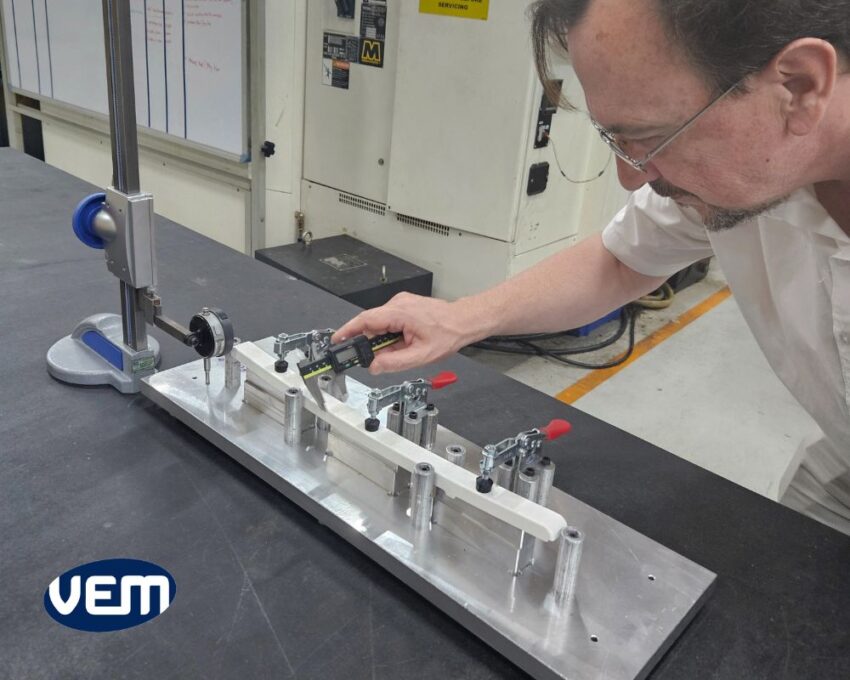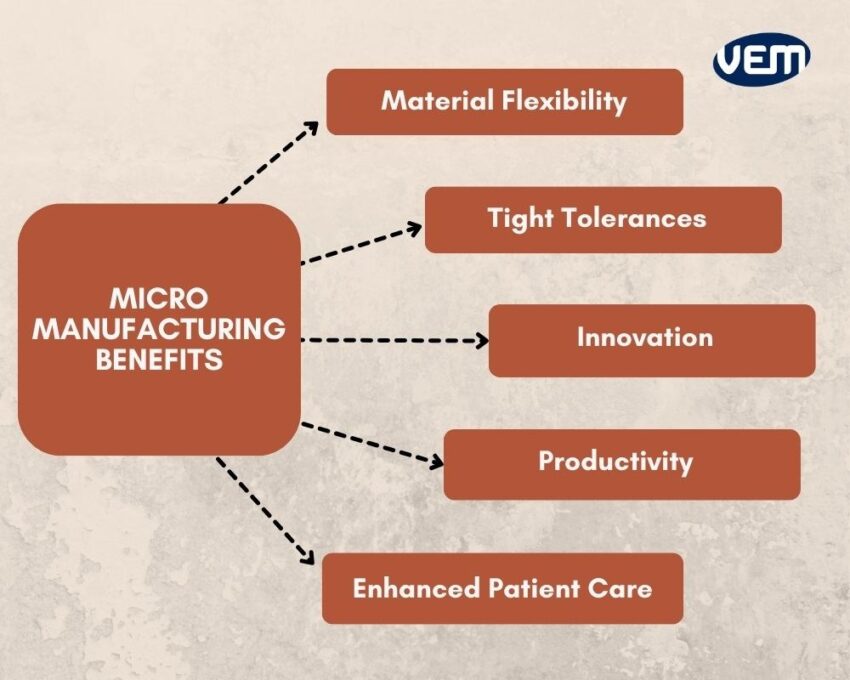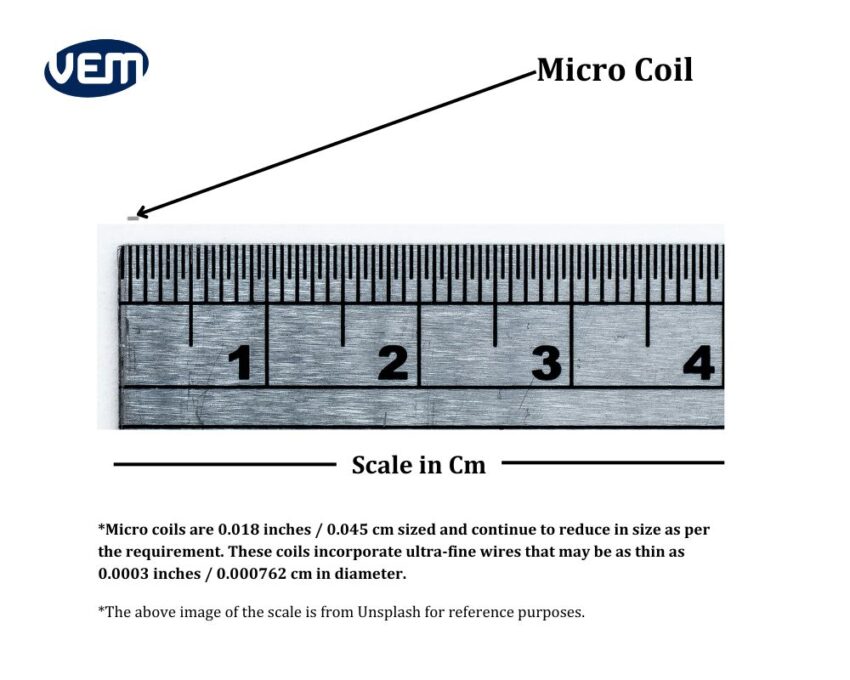The medical device industry is a rapidly evolving industry that’s revolutionizing healthcare to improve patient care and treatment outcomes. Most of the advancements are focused on creating smaller devices and to support the same, companies rely on micro manufacturing solutions to develop miniature devices and components.
Micro manufacturing has revolutionized medical devices by enabling the production of complex and intricate components with unparalleled miniaturization. In this article, we discuss the various types of micro manufacturing solutions in detail.
What is Micro Manufacturing?
Micro manufacturing encompasses cutting-edge technologies that create miniature-sized devices and components. It caters specifically to the fabrication of small and microscopic parts with exceptional precision and accuracy. These parts often measure less than one millimeter in size and weigh less than a gram.

Micromanufacturing techniques support intricate designs through specialized manufacturing and inspection equipment. It also incorporates the use of high-precision techniques to ensure consistency and quality.
Micromanufacturing techniques have enabled manufacturers to develop an array of processing capabilities. Some common techniques in micro manufacturing are micro welding, micro over-molding, micro EDM, micro-assembly, etc.
Micro Manufacturing Benefits

Micromanufacturing techniques deliver unique advantages for an array of products in the medical device industry. Let’s understand some of its advantages:
Material Flexibility
Micro manufacturing techniques enable material flexibility. Many materials are not able to withstand the stresses of traditional manufacturing processes but they can be processed through micro manufacturing solutions.
Tight tolerances
Micro manufacturing solutions support incredibly tight tolerances at small sizes with feature sizes of less than 100 micrometers which enables manufacturers to maintain a high level of precision.
Innovation
Micro manufacturing techniques support the development of intricate features and novice features. This enables medical device designers and engineers to develop innovative medical devices.

Productivity
Micro parts manufacturing takes more time when processed via traditional manufacturing processes. Micro manufacturing solutions enable faster turnaround times and lower costs.
Enhanced Patient Care
Micro manufacturing solutions have created a transformative impact on patient care by enabling the development of more and more small products.
Techniques to use for Micro Manufacturing
Micro Overmolding
Micro Overmolding is a manufacturing technique popularly employed to create small medical devices due to its unique ability to create high-quality bonds and connect parts without the requirement of manual adhesives.
The micro overmolding technique enables the creation of complex devices with intricate designs and features that support the incorporation of 2 or more materials. In this process, the overmolding of micro-sized parts is carried out with thermoplastic or elastomer materials. It’s majorly applied when the project requires hermeticity in devices and precise encapsulation. For instance: microfluidic devices, micro-catheters, and drug delivery systems.
Micro Welding
Micro-welding is a popular technique for assembling miniature components when exceptional precision and control are a priority. It primarily enables the assembly of complex microstructures in medical devices and components. Various types of micro welding techniques ensure leak-proof seals and durable joints in medical devices such as nitinol laser welding.
Micro Coiling

Micro coiling is a type of micro manufacturing technique that enables the winding of miniature coils with high precision. This technique enables the fabrication of coils with tight tolerances and desired electrical properties. It plays a crucial role in the miniaturization of devices and is extensively employed in medical devices such as aneurysm coils, guidewires, delivery coils, conductor coils, embolization coils, catheters, implants, and more.
The coil winding process typically involves a feed roller that drives the wire or tube, a guide bushing, and a deflection tool.
Micro Injection Molding
Micro injection molding enables manufacturers to create parts that weigh as small as a fraction of a gram.
It demonstrates various advantages such as faster turnaround times and cycle times. This particular manufacturing technique is extremely popular with manufacturers as it is compatible with various types of thermoplastics such as PEEK and PSU.
Nitinol Processing Techniques
Nitinol is a nickel-titanium alloy that demonstrates a superelastic property and a unique shape memory. These properties enable the alloy to restore its original shape and it is thus able to withstand various biomechanical motions without mechanical deformation or loss of mechanical integrity.
There are various nitinol processing techniques for micro manufacturing medical devices. Let’s understand these processes further:
Nitinol Laser Cutting
Nitinol laser cutting employs a focused laser beam to melt or remove the nitinol material.
This technique has evolved extensively from incorporating fiber lasers to femtosecond lasers. Fiber lasers demonstrate a fast-cutting speed to melt the nitinol and further, a gas is used to eject the molten material; additional post-processing steps are required to remove recast material.
In the case of femtosecond lasers, an extremely fast laser burst is employed to further ablate the material into plasma which eliminates any recast slag that is often the case with fiber lasers. It further minimizes the heat transfer into the rest of the material. This process drastically reduces the post-processing time and it also aims to improve the dimensional precision.
Laser Welding Nitinol
This particular process is typically employed for small parts that cannot be otherwise welded by traditional welding processes. You should note that the unique properties of nitinol cannot be applied to all types of material and thus, limit the material types that can be laser welded to it.
Nitinol Braiding
It is a type of nitinol processing where nitinol wires are interlaced to create flexible yet robust structures. These structures are incorporated into medical devices and their most common applications are catheter components, stents, flow diverters, and heart failure implants.
Nitinol Shape Setting
This process sets the part into its required configuration. It also transforms the mechanical properties to meet key performance attributes.
In this process, a laser-cut nitinol component is mounted on a custom fixture or mandrel. This is further, heat treated to set the shape.
Nitinol Oxide Removal
If the Nitinol shape setting isn’t performed in an inert environment, thermal oxide may be created on the surface of nitinol components which isn’t biocompatible. Thus, if bio-compatibility is a requirement, removal of the non-biocompatible thermal oxide is a prerequisite.
This can be carried out through chemical etching or mechanical means such as blasting with an ultrafine abrasive powder.
Nitinol Electropolishing
This is an electrochemical process that is typically employed to round the edges. It also helps to remove damage from slag, burrs, and heat-affected material.
In this process, the nitinol components are connected to an electric current and they are placed in an acid solution for a predetermined time frame.
Nitinol Electrical Discharge Machining (EDM)
EDM is a type of processing technology in which electrical discharges are employed to remove material to produce features in a part.
The Nitinol EDM process does not require the tool to be in physical contact with the part thus, the super-elasticity of the material is not affected during the manufacturing process.
Photochemical Machining Nitinol
This process provides a method of fabricating tighter tolerances and precision features into nitinol with highly concentrated acid.
This process starts with a patterned photoresist which is followed by acid exposure. After the acid exposure is complete, the photoresist is removed and the part is finally cleaned. You should note that the photochemical etching process dissolves the nitinol material, which produces burr-free edges.
Metal Fabrication
Metal fabrication enables manufacturers to create components via cutting and bending metal material. Let’s understand the various metal fabrication techniques:
Centerless Grinding
Centerless grinding enables manufacturers to remove material on a wire selectively. It makes use of a grinding wheel, work blade, and regulating roller. In this process, the regulating roller and the grinding wheel rotate in the same direction causing the part to counter rotate against the work blade.
CNC Machining
CNC, abbreviated for computer numerical control, incorporates a tool to remove material from a part. It has various applications such as micro scale implants, catheter components, and delivery system components. You can read more about CNC machining here.
Photochemical Machining
Photochemical machining is also referred to as photochemical etching or chemical etching. This technique enables manufacturers to achieve tight tolerances and precision features in micro-scale metal components.
In this process, a patterned photoresist is exposed to acid after which the photoresist is removed and the part is cleaned. Its most common applications are in surgical jaws, blades, and needles.
Metal Stamping
Metal stamping is a highly efficient micro manufacturing technique. It incorporates feeding a flat metal sheet into a stamping press, in which a die and a punch shape and cut the metal as required. The die of the stamping press contains cavities and contours that impart the shape and features to the metal, whereas the punch applies the required force to the metal.
Metal stamping enables medical device manufacturers to produce complex and intricate geometries with tight tolerances. It is commonly applied in the manufacturing of various surgical instruments and catheters.
Laser Processing Techniques
Laser technologies have various advantages over traditional micro manufacturing mechanical processes such as:
- No part contact
- Minimal heat input
- High precision, accuracy, and speed.
- Less waste materials
- Easy processing for complex geometries
Various types of lasers can be used for micro manufacturing medical devices. Some of the most common laser types are fiber, femtosecond, picosecond, and Nd:YAG.
Let’s understand the various types of laser processing techniques for micro manufacturing:
Laser Cutting
Laser cutting is extensively applied for the manufacturing of medical devices that have a more complex geometry.
In this technique, a focused laser beam is employed to melt the material. The laser type is largely dependent upon the material type, its feature size, and tolerances.
Laser Welding
Laser welding enables manufacturers to join two parts of a medical device without a filler material. A focused laser beam is employed to create welds that maintain the integrity of the base material thereby preventing any type of distortion or defects to the final part.
It is particularly useful in applications that require welding of parts that are too small to be joined together by traditional welding techniques.
Laser Ablation
This process selectively removes material on micro-scale metal, polymer, or glass components through direct vaporization that occurs due to the exposure of a focused laser beam.
Laser Drilling
Laser drilling is a type of ablation process in which a focused laser beam drills holes in the components that are of micron size. This technique enables manufacturers to drill holes that are single microns in diameter. You should note that this isn’t possible through traditional drilling techniques. In addition, laser drilling helps to eliminate heat damage.
Its various applications in the medical device industry are infusion catheters and drug delivery balloons.
Laser Marking
Laser marking is a technique that incorporates a focused laser beam to create permanent marks on the surface of the parts.
It can be applied in the medical device industry to place logos or barcodes.
Contact Us
Micro manufacturing companies should demonstrate expertise and be current with recent technologies and innovative solutions. In addition, medical device components must be manufactured with extensive quality management systems.
VEM Tooling and Medical has over 20 years of experience in mold design, and injection molding. We can help you transform your idea into a complete design. If you are interested in micro manufacturing, you can contact us and talk to our experts.



